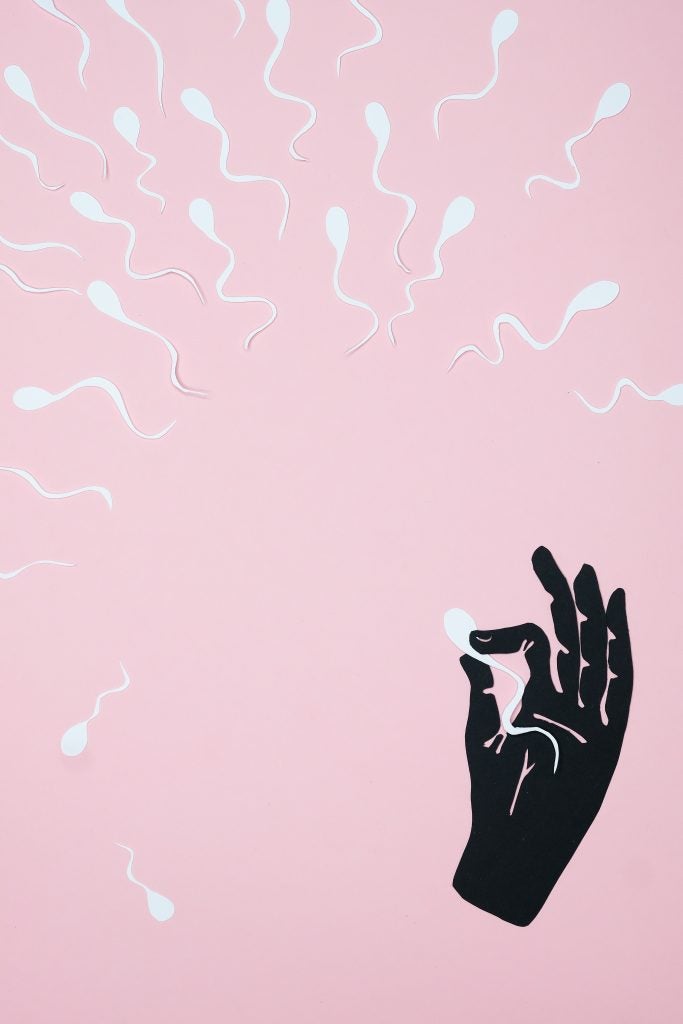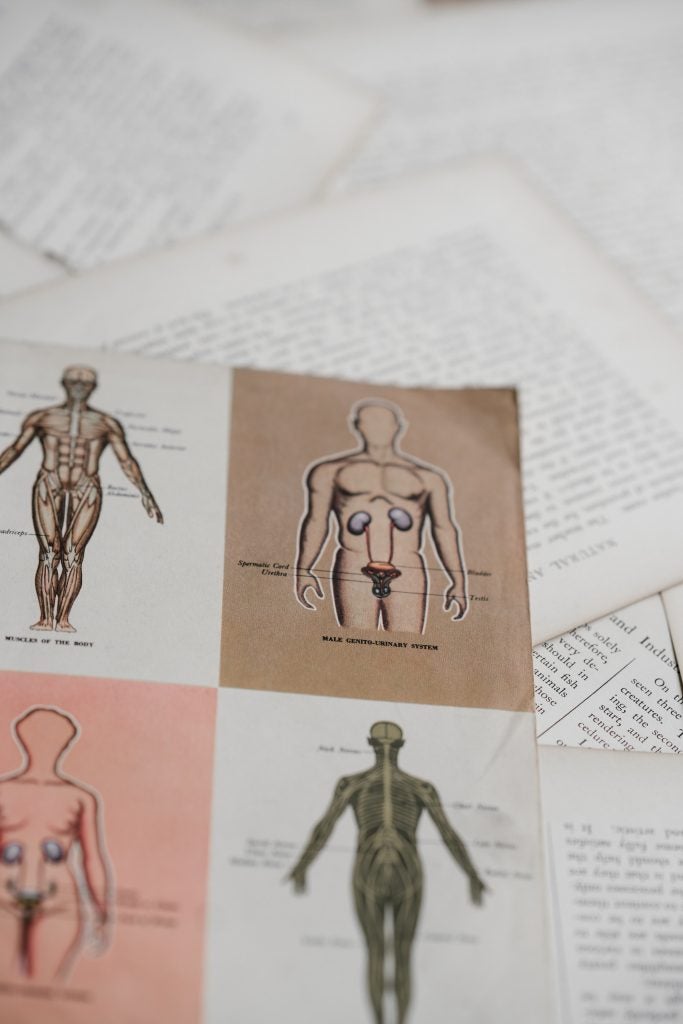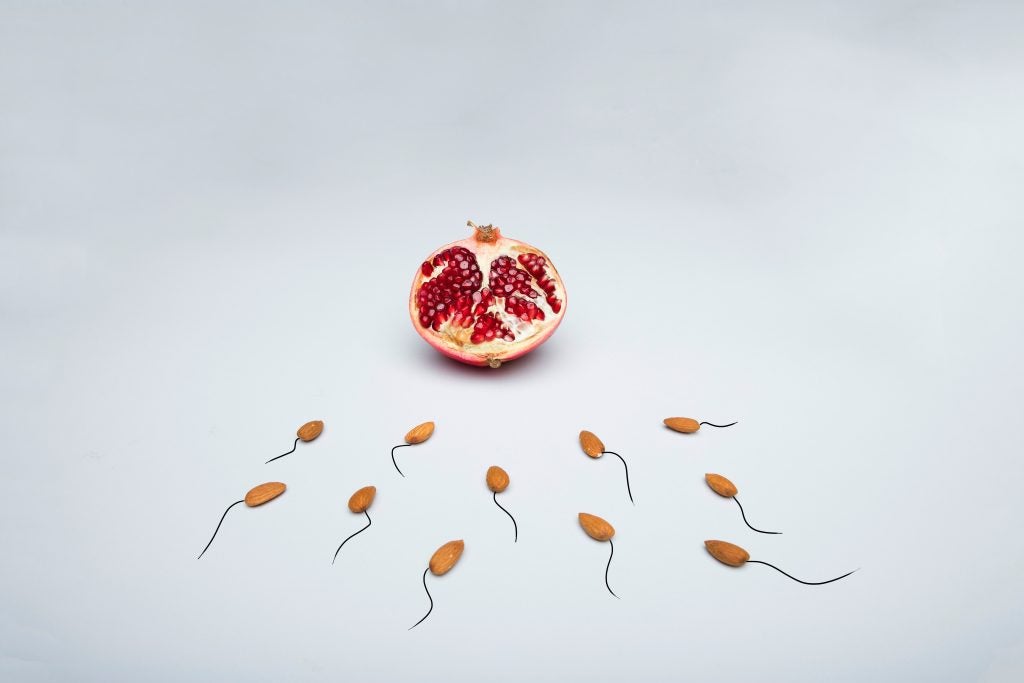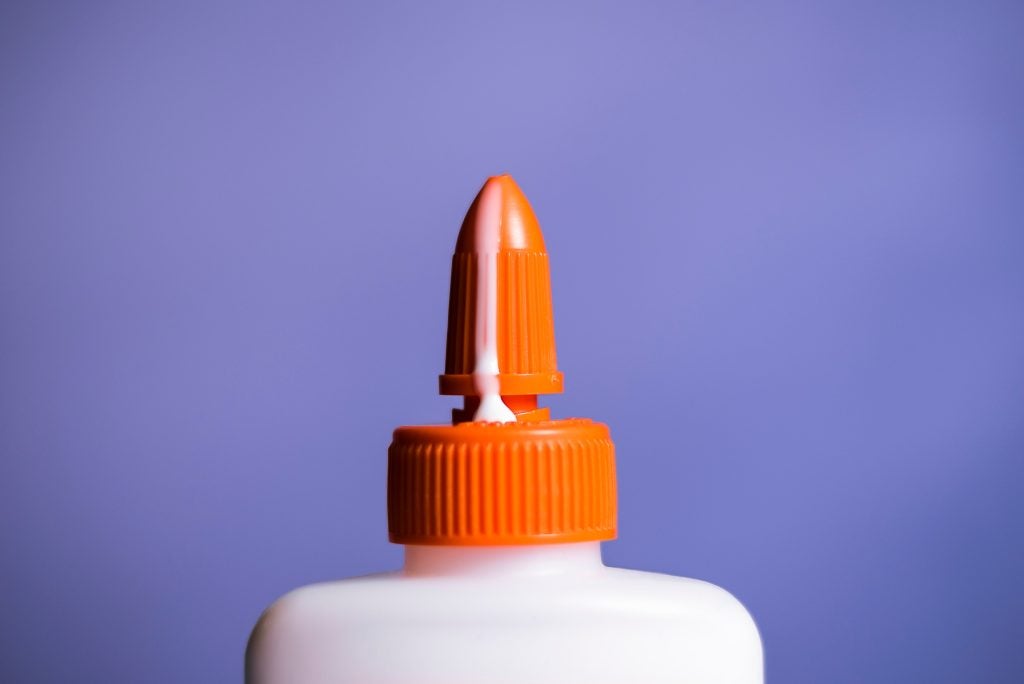
Spermatogenesis is the production and development of sperm. This process begins at puberty and continues for the remainder of a male’s life. The sperm and the egg, which are the male and female gametes, meet during fertilization. Both gametes are haploid cells; these cells contain 23 unpaired chromosomes, which is half of the human genetic makeup. When these haploid cells meet they form a zygote, or a fertilized egg, which contains a total of 46 chromosomes.1
Table of Contents
The Sperm’s Journey

The seminiferous tubules of the testicle are the site of sperm production. Once created, the sperm migrate to the epididymis to be stored for several weeks until they are mature. During the ejaculation process, the mature sperm travel from the epididymis to the vas deferens. The vas deferens then joins with the seminal vesicle to form the ejaculatory duct. The sperm combines with seminal vesicle fluid, prostate fluid, and bulbourethral fluid to form semen, commonly know as “cum.” The semen then exits the body through the urethra during ejaculation. Young and healthy males can produce several hundred million sperm a day.2
Spermatogenesis Process
Sperm cells undergo a series of cellular changes and divisions in order to fully develop. First, during meiosis I, two haploid cells form from one diploid cell. Then, during meiosis II, sister chromatids split to create four daughter cells.3 Sister chromatids are pieces of identical DNA allow the formation of two cells from one cell. Through this process, each daughter cell receives a unique combination of the male’s genes, ensuring genetic diversity. The cell begins as a spermatogonium, an undeveloped diploid sperm cell, and ends as four spermatids. These spermatids form the fully developed sperm cells that comprise semen.1
Irregularities in Sperm Production

Males can produce several million sperm per day, so the process must be highly regulated by the body in order to ensure sufficient sperm quality and quantity. Sperm production is optimal when the testicles are two to four degrees Celsius below body temperature. Normally the temperature of the testes is regulated by the expansion and contraction of the scrotom. This brings the testicles either closer or further away from the body to achieve the desired temperature. During prolonged testicular heating, this cooling system may be insufficient, and the rise in testicular temperature may affect the quality and quantity of the sperm produced.4
If an error in cell division occurs, the spermatid daughter cell could contain an extra copy of a chromosome. If this sperm meets with an egg, it can cause trisomy, a zygote that has three copies of a particular chromosome. The most common form of this is trisomy of the 21st chromosome, known as Down Syndrome.5
Concluding Remarks

Sperm production begins at puberty, and can continue throughout a male’s life. Sperm is produced in the testicles, and exits the body through the urethra during ejaculation. Fertilization then occurs when a male’s sperm penetrates a female’s egg. Although irregularities can occur, the body is usually able to properly regulate spermatogenesis and produce strong, healthy sperm.
References
- The Editors of Encyclopedia Britannica. “Spermatogenesis.” Encyclopedia Britannica. Encyclopedia Britannica, Inc., 6 June 2010. Web. 28 Feb. 2017.
- Miller, Scott. “Sperm Release Pathway.” Health Video: MedlinePlus Medical Encyclopedia. N.p., n.d. Web. 28 Feb. 2017.
- Anderson, Joshua. “Spermatogenesis: How the Male Reproductive System Produces Sperm.”Study.com. N.p., n.d. Web. 28 Feb. 2017.
- Marie, Joanne. “Male Infertility and Testicular Temperature.” Chron.com. Chron.com, 20 Mar. 2013. Web. 13 Mar. 2017.
- “What Is Down Syndrome.” National Down Syndrome Society. NDSS, n.d. Web. 13 Mar. 2017.
Last Updated: 19 March 2017.
